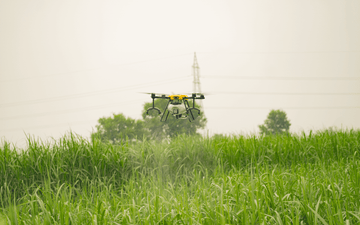Introduction
As drones become an integral part of military, commercial, and industrial applications, one major challenge persists—operating in GPS-denied environments. In battlefields, dense urban areas, underground tunnels, or remote locations where GPS signals are weak or deliberately jammed, traditional drones face navigation and operational failures. However, advancements in AI, computer vision, and sensor fusion are enabling drones to make autonomous decisions and operate effectively without relying on GPS.
This blog explores the technology behind autonomous drones, their ability to function in GPS-denied environments, and the future of self-navigating UAVs.
The Need for GPS-Independent Navigation
Drones typically rely on Global Positioning System (GPS) for precise navigation, positioning, and path planning. However, jamming, spoofing, and environmental obstacles can render GPS unreliable. Military adversaries frequently use electronic warfare techniques to disrupt GPS signals, and urban landscapes often create signal interference.
To address these challenges, modern drones use a combination of sensor-based navigation and AI-driven autonomy to operate without external satellite support.
Key Technologies Enabling Autonomous Decision-Making
1. Inertial Navigation Systems (INS)
INS utilizes gyroscopes and accelerometers to track a drone’s movement relative to a known starting position. While INS alone can accumulate errors over time (drift), combining it with other systems improves accuracy.
2. Visual Odometry and Computer Vision
Drones equipped with high-resolution cameras use computer vision algorithms to analyze their surroundings, detect obstacles, and map environments in real-time. This method allows drones to recognize landmarks and estimate movement without GPS.
3. Lidar and SLAM (Simultaneous Localization and Mapping)
Lidar (Light Detection and Ranging) sensors scan the environment using laser pulses, creating 3D maps of surroundings. SLAM algorithms then allow drones to build a real-time map while determining their own position within it.
4. Radio Frequency and Signals of Opportunity
In GPS-denied environments, drones can use alternative radio signals, such as cellular towers, Wi-Fi signals, or even Earth’s magnetic field, to estimate their location and maintain navigation.
5. Artificial Intelligence and Machine Learning
AI-driven decision-making enables drones to analyze sensor data, predict obstacles, and autonomously adjust their flight paths. Machine learning models trained on terrain data, object recognition, and flight patterns allow drones to adapt dynamically to unknown environments.
Applications of GPS-Denied Drones
1. Military and Defense
-
Covert operations: Autonomous drones can navigate hostile territories where GPS signals are jammed.
-
Reconnaissance and Surveillance: AI-powered UAVs can map enemy locations in real-time.
-
Swarm Drones: Multiple drones can communicate and coordinate attacks without external navigation inputs.
2. Search and Rescue Missions
-
Disaster Relief: GPS-denied drones can navigate collapsed buildings, underground tunnels, or dense forests to locate survivors.
-
Wildfire Monitoring: Autonomous UAVs can map fire spread patterns without relying on satellite data.
3. Urban and Industrial Applications
-
Autonomous Delivery: Drones can navigate cities using computer vision and AI for last-mile delivery.
-
Underground and Indoor Inspections: Factories, tunnels, and mines can be monitored using self-navigating UAVs.
Challenges and Future Developments
Despite significant advancements, GPS-independent drones still face:
-
Computational Limitations: Processing real-time data from multiple sensors requires high computing power.
-
Environmental Variability: Extreme weather, dust, and low-light conditions affect sensor accuracy.
-
AI Ethics and Safety: Fully autonomous decision-making in military and civilian applications requires stringent ethical guidelines and fail-safe mechanisms.
Future developments focus on improving energy efficiency, real-time data fusion, and collaborative AI to enhance the autonomy of drones in denied or contested environments.
Conclusion
The era of GPS-dependent drones is fading as autonomous navigation systems powered by AI, Lidar, and sensor fusion take center stage. These innovations enable drones to operate in hostile, GPS-denied environments, ensuring mission success in military, rescue, and industrial applications. As AI and machine learning continue to evolve, drones will become increasingly self-reliant, capable of navigating complex landscapes without human intervention or satellite support.






